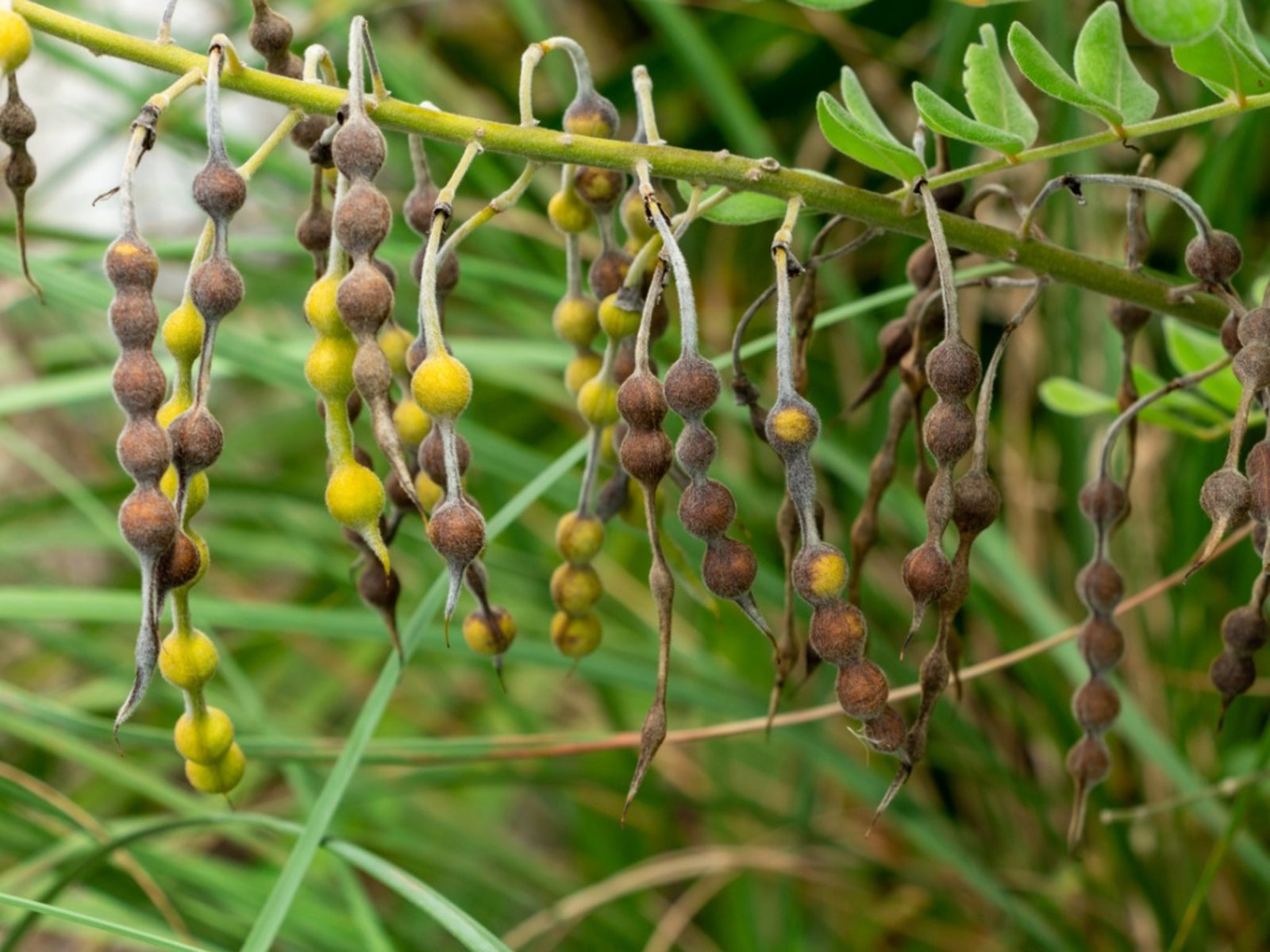Eve’s Necklace Tree Information: Tips For Growing Necklace Trees


Eve’s necklace (Sophora affinis) is a small tree or a large bush with fruit pods that look like a beaded necklace. Native to the American South, Eve’s necklace is related to Texas mountain laurel. Read on for more information about growing necklace trees.
What is a Necklace Tree?
If you’ve never seen this tree before, you may ask: “What is a necklace tree?” When you study Eve’s necklace tree information, you find that it is a deciduous tree that grows in a rounded or vase shape and rarely rises above 25 feet (7.6 m.) tall. The necklace tree has dark, lustrous green leaves that appear in springtime. The flower buds also appear on the tree in spring and open into showy while blossoms tinged with rosy pink that dangle from the plant in clusters like wisteria. They are fragrant and stay on the tree most of the spring, from March through May. As summer wanes, the flowers give way to long, black, segmented fruit pods. The pods are constricted between the seeds so that they look like bead necklaces. The seeds and flowers are poisonous to humans and should never be consumed. This tree benefits native wildlife. Eve’s necklace flowers attract bees and other nectar-loving insects, and birds build nests in its branches.
Eve’s Necklace Tree Information
Growing necklace trees is not difficult. The trees are extremely tolerant, thriving on any soil – sand, loam or clay – from acidic to alkaline. They grow in any exposure from full sun to full shade, accepts high temperatures and requires little water. These trees grow very fast. A necklace tree can shoot up 36 inches (91 cm.) in one season, and up to six feet (.9 m.) in three years. Its spreading branches do not droop, nor do they break easily. The roots won’t damage your foundation either.
How to Grow Eve’s Necklace Trees
Grow Eve’s necklace in relatively warm regions like those found in U.S. Department of Agriculture plant hardiness zones 7 through 10. It is most attractive when grown as a specimen tree with lots of room to expand to 20 feet (6 m.) wide. You can grow this tree from its seeds. Wait until the pods dry and the seeds turn red before collecting them. Scarify them and soak them overnight in water before sowing.
Sign up for the Gardening Know How newsletter today and receive a free copy of our e-book "How to Grow Delicious Tomatoes".

Teo Spengler is a master gardener and a docent at the San Francisco Botanical Garden, where she hosts public tours. She has studied horticulture and written about nature, trees, plants, and gardening for more than two decades, following a career as an attorney and legal writer. Her extended family includes some 30 houseplants and hundreds of outdoor plants, including 250 trees, which are her main passion. Spengler currently splits her life between San Francisco and the French Basque Country, though she was raised in Alaska, giving her experience of gardening in a range of climates.